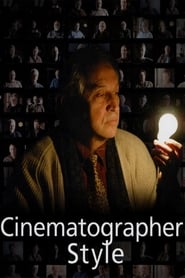Matthew Libatique
July 19, 1968 (57 years old) in Queens, New York City, New York, USA
Matthew Libatique (born July 19, 1968) is an American cinematographer. He is best known for his collaborations with director Darren Aronofsky on the films Pi (1998), Requiem for a Dream (2000), The Fountain (2006), Black Swan (2010), Noah (2014), and Mother! (2017). Libatique has received three Academy Awards for Best Cinematography nominations for his work on Black Swan (2010), A Star Is Born (2018), and Maestro (2023). Description above from the Wikipedia article Matthew Libatique, licensed under CC-BY-SA, full list of contributors on Wikipedia.
Known For
Credits
- 2018 · The Road to Stardom: The Making of A Star Is Born as Self
- 2018 · A Star Is Born as Photographer
- 2011 · Black Swan: Metamorphosis as Self
- 2007 · Inside The Fountain: Death and Rebirth as Himself
- 2006 · Cinematographer Style as Self
- 2004 · Painting with Fire as Self
- 2004 · On the Set of 'Gothika' as Self




